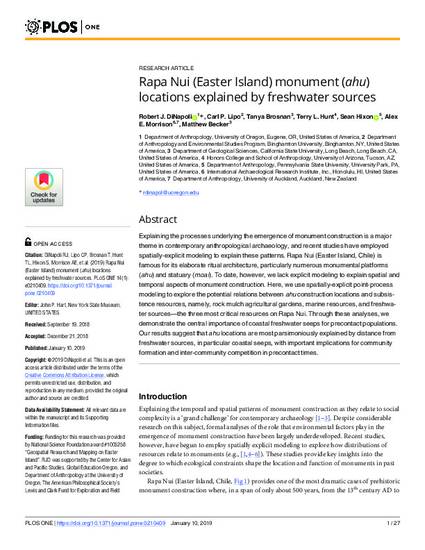
0000-0003-4391-3590
- Rapa Nui,
- Easter Island,
- hydrology,
- moai,
- ahu,
- monumental architecture,
- spatial analysis
Explaining the processes underlying the emergence of monument construction is a major theme in contemporary anthropological archaeology, and recent studies have employed spatially-explicit modeling to explain these patterns. Rapa Nui (Easter Island, Chile) is famous for its elaborate ritual architecture, particularly numerous monumental platforms (ahu) and statuary (moai). To date, however, we lack explicit modeling to explain spatial and temporal aspects of monument construction. Here, we use spatially-explicit point-process modeling to explore the potential relations between ahu construction locations and subsis- tence resources, namely, rock mulch agricultural gardens, marine resources, and freshwa- ter sources—the three most critical resources on Rapa Nui. Through these analyses, we demonstrate the central importance of coastal freshwater seeps for precontact populations. Our results suggest that ahu locations are most parsimoniously explained by distance from freshwater sources, in particular coastal seeps, with important implications for community formation and inter-community competition in precontact times.
DiNapoli RJ, Lipo CP, Brosnan T, Hunt TL, Hixon S, et al. (2019) Rapa Nui (Easter Island) monument (ahu) locations explained by freshwater sources. PLOS ONE 14(1): e0210409. https://doi.org/10.1371/journal.pone.0210409
